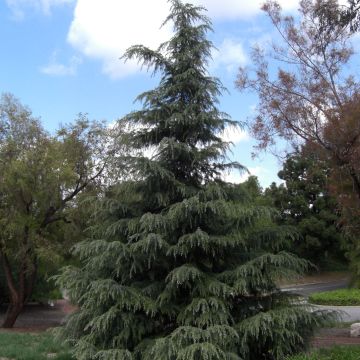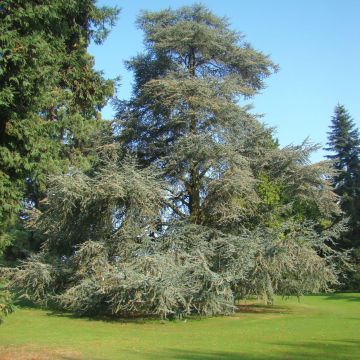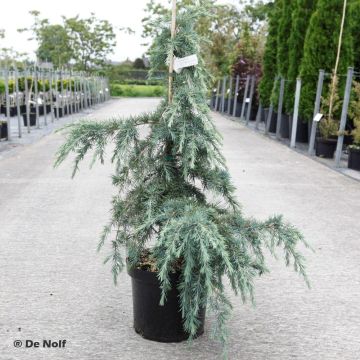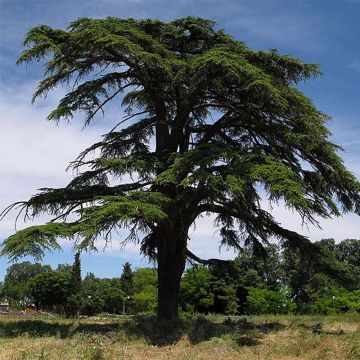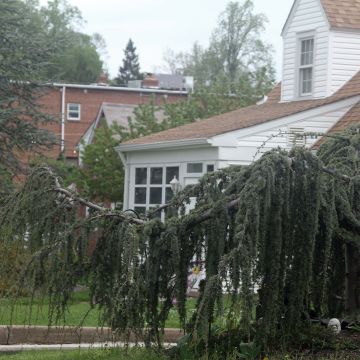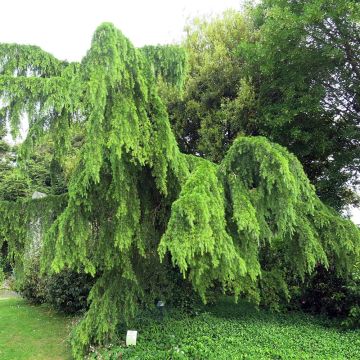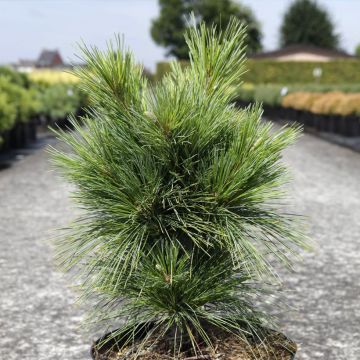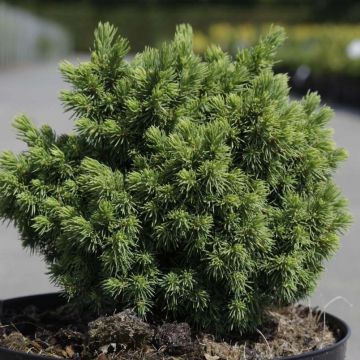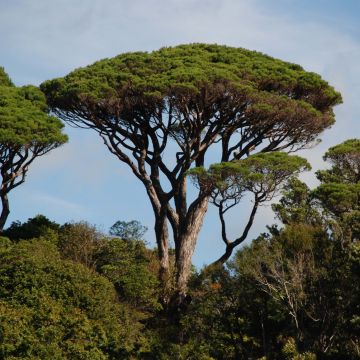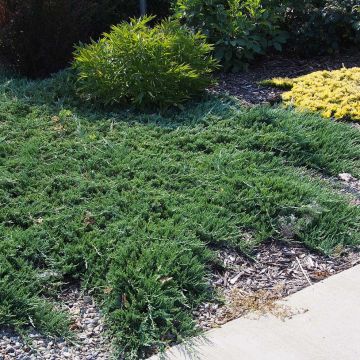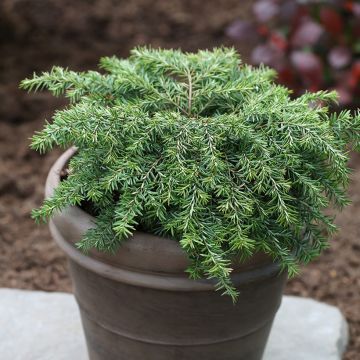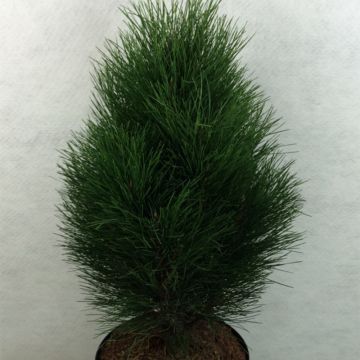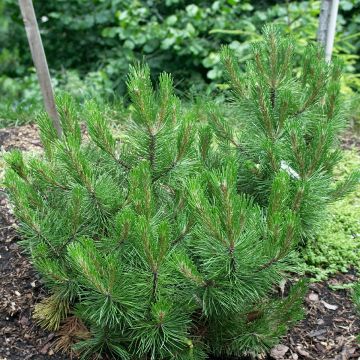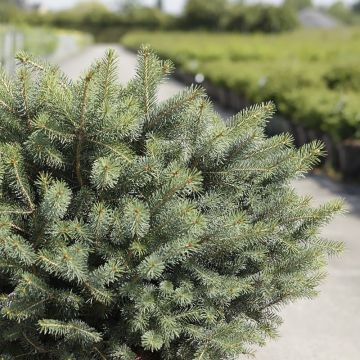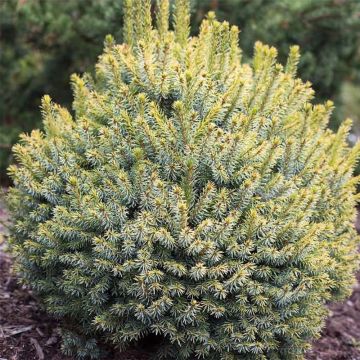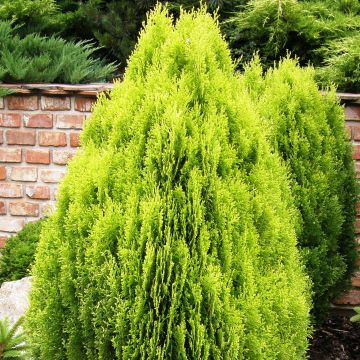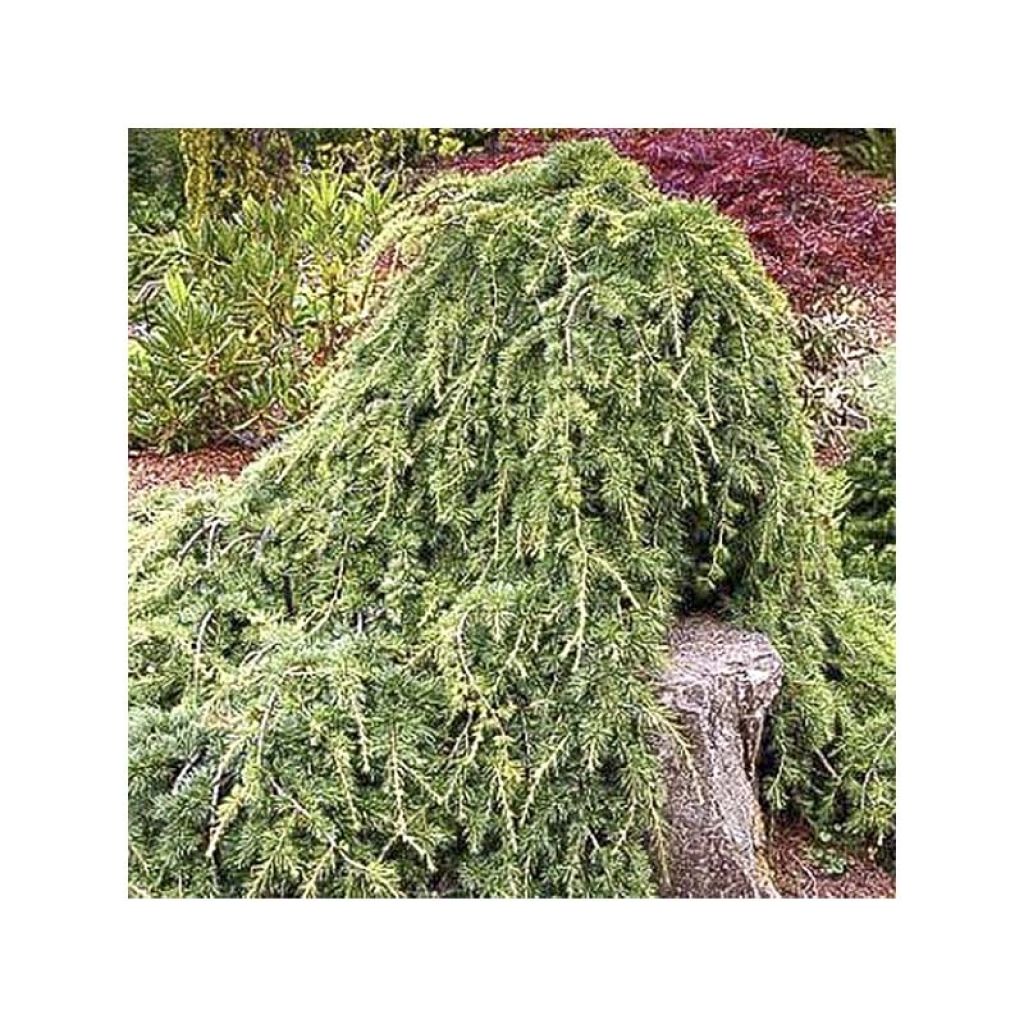

Cedrus libani subsp. atlantica Sargentii - Blue Atlas Cedar
Cedrus libani subsp. atlantica Sargentii - Blue Atlas Cedar
Cedrus libani subsp. atlantica Sargentii
Blue Atlas Cedar
Why not try an alternative variety in stock?
View all →This plant carries a 24 months recovery warranty
More information
We guarantee the quality of our plants for a full growing cycle, and will replace at our expense any plant that fails to recover under normal climatic and planting conditions.
From €5.90 for pickup delivery and €6.90 for home delivery
Express home delivery from €8.90.
Does this plant fit my garden?
Set up your Plantfit profile →
Description
The Cedrus libani atlantica 'Sargentii' is a dwarf and prostrate form of the Atlas Cedar that develops mainly in width rather than height, making it a good ground cover. Combined with its strongly reduced growth, it is a variety that adapts well to small gardens and container cultivation. Adding a stake allows it to grow taller and have a more beautiful effect when trailing. Its arching-to-prostrate branches bear young light blue-green shoots that contrast with the darker mature evergreen needles. It grows best in sunny, deep, rich, light, and moist soil, but it also tolerates heat and drought once well established!
The Cedrus libani subsp. atlantica, better known as the Atlas cedar, blue cedar, or silver cedar, is considered a subspecies of the Lebanese cedar. It is a majestic conifer, native to the Atlas Mountains, which extend through Morocco, Algeria, and Tunisia. This imposing conifer has a tabular habit when mature and a more slender silhouette than its cousin, the Lebanese cedar. This light-coloured species has excellent longevity. It stands out from other cedars with its upright branches and short, less prickly needles.
The 'Sargentii' cultivar is distinguished by its weeping habit, extremely slow growth, and small dimensions. At maturity, it reaches only 1m (3 ft 4 in) in height and 3m (9 ft 10 in) in width. This tree forms a straight and wide trunk that divides into slightly arching to trailing branches. The bark, initially grey and smooth in young specimens, becomes rougher over the years. It exfoliates in small scales. The secondary branches are pubescent when young. They bear abundant foliage in clusters of light blue-green needles in spring, becoming dark blue-green. "Flowering" occurs in early autumn. Each individual carries cylindrical female cones, flattened at the top, measuring 5 to 7 cm (2 to 2.8 in) in length and green in colour, turning brown-purple. The male catkins are conical and brown. The seeds take 3 years to mature. They are nestled between the scales of the female cones and have a 2 cm (0.8 in)-long wing.
The Atlas blue cedar 'Sargentii' deserves a prominent place in a small garden. This majestic conifer requires isolation to fully enjoy its beautiful silhouette and exceptional foliage. It can also be used as a ground cover along a terrace or allowed to cascade from a wall or container. The garden will then take on a whole new dimension, with an elegant and romantic style. Space the trees adequately to avoid crowding in the future. Note that this tree is not only very hardy but also capable of growing in poor, rocky, and dry soils in summer. The Atlas cedar also thrives in bonsai cultivation.
Report an error about the product description
Cedrus libani subsp. atlantica Sargentii - Blue Atlas Cedar in pictures




Plant habit
Foliage
Botanical data
Cedrus
libani subsp. atlantica
Sargentii
Pinaceae
Blue Atlas Cedar
Cultivar or hybrid
Other Cedar
Planting and care
The 'Sargentii' Atlas cedar is not very demanding in terms of soil and climate. While it grows faster in fertile, deep and moist soil, it can tolerate much less favourable conditions and summer drought once established. It can withstand freezing temperatures of around -15/-16°C (5/3.2 °F). It can be planted from September to November and from February to June in ordinary soil, preferably deep and well-drained to prevent water from stagnating. Choose a very sunny, well-cleared location and anticipate the future development of this tree. Do not disturb it, its root system needs to firmly anchor in the soil to resist drought and wind. Soak the root ball well before planting. Stake your young cedar, water it regularly to help it establish, especially in summer, during the first 2 or 3 years. Add an organic supplement when planting (crushed horn or bonemeal...). Optionally, every year in April, apply a special conifer fertiliser and hoe the soil in summer. Pruning is not necessary, except to shape the tree or remove dead branches at the base of the trunk as it grows.
Planting period
Intended location
Care
This item has not been reviewed yet - be the first to leave a review about it.
Conifers
Haven't found what you were looking for?
Hardiness is the lowest winter temperature a plant can endure without suffering serious damage or even dying. However, hardiness is affected by location (a sheltered area, such as a patio), protection (winter cover) and soil type (hardiness is improved by well-drained soil).

Photo Sharing Terms & Conditions
In order to encourage gardeners to interact and share their experiences, Promesse de fleurs offers various media enabling content to be uploaded onto its Site - in particular via the ‘Photo sharing’ module.
The User agrees to refrain from:
- Posting any content that is illegal, prejudicial, insulting, racist, inciteful to hatred, revisionist, contrary to public decency, that infringes on privacy or on the privacy rights of third parties, in particular the publicity rights of persons and goods, intellectual property rights, or the right to privacy.
- Submitting content on behalf of a third party;
- Impersonate the identity of a third party and/or publish any personal information about a third party;
In general, the User undertakes to refrain from any unethical behaviour.
All Content (in particular text, comments, files, images, photos, videos, creative works, etc.), which may be subject to property or intellectual property rights, image or other private rights, shall remain the property of the User, subject to the limited rights granted by the terms of the licence granted by Promesse de fleurs as stated below. Users are at liberty to publish or not to publish such Content on the Site, notably via the ‘Photo Sharing’ facility, and accept that this Content shall be made public and freely accessible, notably on the Internet.
Users further acknowledge, undertake to have ,and guarantee that they hold all necessary rights and permissions to publish such material on the Site, in particular with regard to the legislation in force pertaining to any privacy, property, intellectual property, image, or contractual rights, or rights of any other nature. By publishing such Content on the Site, Users acknowledge accepting full liability as publishers of the Content within the meaning of the law, and grant Promesse de fleurs, free of charge, an inclusive, worldwide licence for the said Content for the entire duration of its publication, including all reproduction, representation, up/downloading, displaying, performing, transmission, and storage rights.
Users also grant permission for their name to be linked to the Content and accept that this link may not always be made available.
By engaging in posting material, Users consent to their Content becoming automatically accessible on the Internet, in particular on other sites and/or blogs and/or web pages of the Promesse de fleurs site, including in particular social pages and the Promesse de fleurs catalogue.
Users may secure the removal of entrusted content free of charge by issuing a simple request via our contact form.
The flowering period indicated on our website applies to countries and regions located in USDA zone 8 (France, the United Kingdom, Ireland, the Netherlands, etc.)
It will vary according to where you live:
- In zones 9 to 10 (Italy, Spain, Greece, etc.), flowering will occur about 2 to 4 weeks earlier.
- In zones 6 to 7 (Germany, Poland, Slovenia, and lower mountainous regions), flowering will be delayed by 2 to 3 weeks.
- In zone 5 (Central Europe, Scandinavia), blooming will be delayed by 3 to 5 weeks.
In temperate climates, pruning of spring-flowering shrubs (forsythia, spireas, etc.) should be done just after flowering.
Pruning of summer-flowering shrubs (Indian Lilac, Perovskia, etc.) can be done in winter or spring.
In cold regions as well as with frost-sensitive plants, avoid pruning too early when severe frosts may still occur.
The planting period indicated on our website applies to countries and regions located in USDA zone 8 (France, United Kingdom, Ireland, Netherlands).
It will vary according to where you live:
- In Mediterranean zones (Marseille, Madrid, Milan, etc.), autumn and winter are the best planting periods.
- In continental zones (Strasbourg, Munich, Vienna, etc.), delay planting by 2 to 3 weeks in spring and bring it forward by 2 to 4 weeks in autumn.
- In mountainous regions (the Alps, Pyrenees, Carpathians, etc.), it is best to plant in late spring (May-June) or late summer (August-September).
The harvesting period indicated on our website applies to countries and regions in USDA zone 8 (France, England, Ireland, the Netherlands).
In colder areas (Scandinavia, Poland, Austria...) fruit and vegetable harvests are likely to be delayed by 3-4 weeks.
In warmer areas (Italy, Spain, Greece, etc.), harvesting will probably take place earlier, depending on weather conditions.
The sowing periods indicated on our website apply to countries and regions within USDA Zone 8 (France, UK, Ireland, Netherlands).
In colder areas (Scandinavia, Poland, Austria...), delay any outdoor sowing by 3-4 weeks, or sow under glass.
In warmer climes (Italy, Spain, Greece, etc.), bring outdoor sowing forward by a few weeks.

































